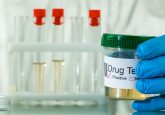Bioanalysis of Diagnostic and Therapeutic Oligonucleotides: An Emphasis on LC-FL and LC-MS Based Assays

In this article, recent developments and considerations for liquid chromatographic (LC) methods of oligonucleotides are discussed, highlighting LC-Mass Spectrometry and LC-Fluorescence assays, and the benefits of systematic incorporation into a bioanalysis laboratory.
About the authors:
Alexander Behling, Senior Scientist, Biomarkers
Alexander Behling serves as a Senior Scientist in the Biomarker Department at PPD Laboratories. He leads chromatographic assay development and validation to support sponsor clinical trials and expand internal assay portfolios. Currently, he is engaged in the development of LC-MS and LC-FL based assays to facilitate the establishment of a cross-functional laboratory for oligonucleotide bioanalysis.
Mr. Behling has over 3 years of experience developing LC-MS based methods for both research and bioanalytical fields. Prior to PPD, Mr. Behling worked as an associate research and development scientist at Thermo Fisher Scientific focusing on LCMS-based proteomics. He received his M.S. in Medical Biotechnology from the University of Illinois-Chicago at Rockford College of Medicine.
Patrick Bennett, Executive Director, Biomarkers
Patrick Bennett is the Executive Director of the PPD Biomarker Laboratories. He also has responsibility to develop and manage bioanalytical and central lab services for rare disease, oncology and other non-traditional therapies.
Mr. Bennett has held scientific and management positions within Bristol-Myers Squibb DMPK group, Laboratory Director at Advion Biosciences (now Q2) and Executive Laboratory Director/General Manager and Vice President at Tandem Labs (now Covance). His focus has been GLP bioanalysis using LC-MS and LBA technologies. Prior to PPD, he was Director of Global Strategic Marketing with Thermo Scientific where he worked with customers and engineers to develop mass spectrometers, reagents, consumables and software for pharmaceutical and biopharmaceutical drug
Mr. Bennett remains very active in the bioanalytical and biomarker scientific community. He has many publications, poster and oral presentations, book chapters and is on the organizing committee of several bioanalytical conferences including BSAT-APA, CPSA and Land O’Lakes Bioanalytical.
Mr. Bennett graduated with a B.S. degree in Toxicology and a M.S. degree in Pharmacology from St. John’s University. He later received his M.B.A. in International Marketing from Syracuse University
Eric Tewalt, Principal Scientist, Immunochemistry Department
Dr. Eric Tewalt serves as a Principal Scientist in the Immunochemistry Department at PPD Laboratories. He oversees a dedicated oligonucleotide team that conducts assay validation and bioanalysis of pharmacokinetic samples in support of sponsor clinical trials in a regulated environment. Dr. Tewalt has over five years of experience in the bioanalytical field and an additional nine years of experience in immunology, infectious disease and cancer research and has extensive knowledge in assay and experimental design. He received his Ph.D. in Immunology and Infectious Diseases from The Pennsylvania State University College of Medicine and conducted his postdoctoral research at The University of Virginia.
Introduction
Within the last 30 years, oligonucleotides (OGN) have come to the forefront as both diagnostic and therapeutic options for a wide variety of disease states—a list that includes many supposedly untreatable via small molecules or biologics. In the clinical diagnostic territory, it has been demonstrated that OGNs, mainly micro RNA (miRNA), can be overexpressed in cancer types, including prostate, lung, breast and female reproductive malignancies among others(1, 2, 3). Regarding therapeutic OGNs, more than 80 companies are currently investigating treatments utilizing antisense RNA (asRNA), small interfering RNA (siRNA) and miRNA to treat diseases such as cancer, cystic fibrosis, Alzheimer’s, hepatitis B, HPV, Duchenne muscular dystrophy, asthma and inflammatory arthritis(4, 22, 23).
It can be seen that the possible OGN therapeutics are endless. Along with a wide range of applications, a tremendous opportunity exists for improved OGN therapeutics. Currently, strategies including conjugation to protective or target-specific vehicles and modifications against degradation have been investigated in an effort to decrease the effective dosage of OGN therapeutics(18, 19, 20, 21). The evolving applications and decreased effective dosages inevitably generate an increased demand for sensitive, accurate, efficient and reliable assays for OGN characterization and quantitation.
This commentary aims to outline the OGN assays that are presently offered, focusing on liquid chromatography to fluorescence or mass spectrometric detection (LC–FL or LC–MS). Further, this will provide insight into the pros and cons of each assay and address the need for a bioanalysis (BioA) site that can incorporate all of the available technologies to best support collaborators working on OGN diagnostics and therapeutics.
Overview of Available OGN Assays
Currently, OGNs are measured in matrices including human plasma, urine or various tissues including the kidney and liver for metabolism studies. The bioanalytical industry has commonly implemented hybridization (ELISA) or molecular (qPCR) techniques for OGN quantitation. Other more cutting-edge technologies such as LC–FL and LC–MS have been investigated, mainly to fill the void in screening and selective quantitation that previous assays could not. All of the available technologies have advantages and disadvantages leading to individually tailored applications.
For example, hybridization assays, such as ELISA, can be very high throughput with simple to no extraction methods, providing the ability to run hundreds of samples per day. Along with its high throughput nature, ELISA also offers a high degree of sensitivity with lower limits of quantitation (LLOQ) as low as 10 pg/mL(3). Conversely, hybridization assays can suffer from a low dynamic range and, most importantly, a lack of selectivity especially when dealing with larger metabolites (n-1 or n-2) of the intended target(6, 7). At the same time, qPCR is another commonly implemented method for OGN analysis which, much like hybridization techniques, offers higher sensitivity and throughput while lacking a degree of selectivity. Alternatively, qPCR can provide a much larger dynamic range without requiring standards for quantitative analysis(4,7).
Not unlike the previously mentioned technologies, LC–FL and LC–MS have their own pluses and minuses. Contrary to ELISA and qPCR, LC–based assays typically require longer method development time and are naturally lower throughput due to sample extraction methods and longer sample analysis times. Despite this, LC–FL and LC–MS have been demonstrated to provide the needed selectivity without sacrificing considerable sensitivity as a result of continual improvements in instrumentation and sample preparation methods. Although this commentary focuses on LC–based assays, providing the right combination of the available technologies will prove to be the optimal strategy for OGN quantitation.
Recent Developments and Outlook for LC–FL Assays
LC–FL assays are a cross between hybridization and LC–MS assays, which relies on the ability to hybridize a fluorescent probe to the target OGN. The resulting conjugate is subsequently separated through anion-exchange liquid chromatography and detected via fluorescence emission. This type of assay can offer superior levels of sensitivity similar to hybridization techniques. Different from hybridization assays, LC–FL offers an additional degree of selectivity due to the upfront separation. Most major metabolites can be separated sufficiently via chromatography to distinguish them from the actual target. This upfront separation and hybridization-based detection also provides compatibility with OGN modifications and secondary structure(8,9). The drawback of LC–FL assays, however, is the requirement of probe design, leading to longer development and preparation times in addition to increased cost(7,9). Probe requirement can also render LC–FL difficult for smaller OGNs, making assays much more applicable for OGNs longer than 20 nucleotides. Larger OGNs offer the ability for longer fluorescent probe, thus minimizing non-specific binding and, inevitably, leading to increased sensitivity, as fluorescent signal is not lost on unwanted targets(8).
Considering the many benefits of LC–FL assays, few have been developed for OGN quantitation relative to ELISA, qPCR or LC–MS. Although there are few available assays, it has been demonstrated that LC–FL can be validated for bioanalytical analysis down to an LLOQ of 1ng/mL(8, 10). Hutabarat et al. developed an LC–FL assay in rat and monkey plasma utilizing an atto-probe targeted to a siRNA molecule indicated for the treatment of hypercholesterolemia. The quantitative range was reported from 2.3 to 685 ng/mL(11). Most recently, Tian et al. developed another test against an siRNA drug indicated for the treatment of alpha1-antitrypsin deficiency, which can lead to lung or liver disease. This assay was developed with a lower LLOQ of 1ng/mL and up to threefold dynamic range(10).
With obvious benefits of LC–FL assays for OGN quantitation and a lack of readily available tests, it is clear that more development is needed in the near future. These assays have vast potential to stand in a middle ground between LC–MS and ELISA or for those labs working on LC–MS looking for a solution to quantitation of longer, more complex OGNs.
Recent Developments and Outlook for LC–MS Assays
In contrast to LC–FL, a much larger number of LC–MS assays has been developed and validated for OGN analysis. LC–MS can offer similar levels of sensitivity as LC–FL but with an added degree of selectivity due to the mass differences of the molecules. Most recently, assays have been developed on triple quadrupole, ion-trap and orbitrap instrument(4). Technologies such as the last two offer high resolution accurate mass (HRAM) ion scanning, adding enhanced selectivity over previous systems. LC–MS analysis also does not require the design of expensive probes. Therefore, if a lab already has an LC–MS system available, these assays can be much simpler to implement.
However, many of the drawbacks to LC–MS analysis of OGNs are the same as those encountered with small molecule, peptide or protein analysis (ionization efficiency, charge status, modifications, etc.). The increased selectivity of LC–MS leads to the longstanding sensitivity-versus-selectivity debate(6). Since there is typically an inverse relationship between sensitivity and selectivity, LC–MS can suffer from decreased sensitivity for some OGNs. For example, longer OGNs typically generate multiple charge states, which can lead to signal splitting and decreased sensitivity. As a result, LC–MS assays generally are applicable to OGNs of lengths up to 25-mer(4). A presence of various OGNs metabolites and modifications also can lead to decreased sensitivity due to signal splitting. Additional concerns independent of instrumentation include OGNs sticking to the column and associated tubing, as well as non-specific binding to matrix that can cause loss of target during sample processing and analysis(6).
Beyond the incurred loss from upfront sample preparation, a deficiency of commercially available extraction reagents and protocols make LC–MS assays difficult to implement. The most widely utilized procedures include liquid-liquid extraction (LLE) and anion exchange solid phase extraction(12, 13). Often, a combination of these methods is required and can become quite tedious. A recent study investigated a single-step extraction method with a weak anion exchange solid phase extraction (SPE) cartridge from Phenomenex to achieve optimal recovery without the laborious, stepwise processing of LLE and SPE(14). These upfront sample extraction and processing steps will require further improvements to better match the throughput and sensitivity of traditional OGN assays. Currently, through optimization of these processes, multiple groups have shown the ability to extract and quantitate these OGNs into the low to sub ng/mL range in human plasma(4, 12, 13, 15).
Alongside upfront sample prep enhancements, the evolution of mass spectrometry instrumentation will also allow LC–MS applications to meet sensitivity requirements as effective dosages continue to decrease. For example, ThermoFisher (MA, USA) recently announced an improvement to its QExactive HRAM system (QExactive HF-X) at the 2017 American Society of Mass Spectrometry annual conference (4 – 8 June 2017; IN, USA). The altered front end on the QExactive HF-X is advertised to increase sensitivity two- to fivefold greater than its predecessor. These novel procedures and technologies will help LC–MS assays reach the required quantitative limits.
Beyond the basic quantitation of OGN analytes, LC–MS technologies also have demonstrated the capability to characterize and quantitate major OGN metabolites(16, 17). As quantitative results from ligand-binding or molecular techniques can be affected by the presence of n-1 or n-2 metabolites or other contaminants, an upfront characterization of OGNs by HRAM LC–MS could be implemented to assess the effect of these interferences.
Future Perspective for OGN Analysis
No single technology seems equipped to be the gold standard for all OGN analysis. Generally speaking, LC–MS and possibly LC–FL assays are utilized for shorter OGNs typically 18–25mer in length. Alternatively, larger OGNs more than 25mer and OGNs with more complex structure make it difficult to implement LC–MS. For such analytes, ELISA, qPCR and LC-FL are considered appropriate. Outside of size and structure, each OGN may have individual differences in metabolism that need to be considered. The presence of various metabolites can make quantitative assays difficult to properly implement using hybridization or molecular techniques thanks to nonspecific measurement of target metabolites.
Considering the factors mentioned in this article, having each of these technologies at your disposal will be a valuable approach to OGN analysis and quantitation. As mentioned previously, one possible method to implement each of these technologies together starts with LC–MS for characterization of original OGN metabolites and modifications. This upfront screening could help determine whether a more high-throughput assay such as ELISA or qPCR may be utilized for quantitation. Having processes in place to utilize these technologies in unison would provide the ability to easily accommodate all possible OGN analytes.
The PPD® Laboratories bioanalytical and biomarker labs are well positioned to provide access to each of the OGN technologies. The labs maintain more than 50 LC–MS systems, including triple quadrupole and QTOF and orbitrap HRAM MS systems. The bioanalytical team has more than 15 years of experience developing more than 200 hybridization methods, as well as over 18 years developing and validating molecular methods for OGN analysis. Plans are in place to implement both LC–FL and LC–MS OGN analysis within the biomarker lab at PPD® Laboratories.
Preliminary data from PPD® Laboratories has suggested the ability to quantitate a 18mer OGN in the presence of 3’ n-1 and n-2 analytes via LC-MS. Linear quantitation ranges initially were established from 2 to 1000 ng/mL in human plasma using the Thermo Fisher Q Exactive Plus HRAM system. Our future goal is to push the sensitivity of LC–MS and LC–FL assays into sub ng/mL levels while simplifying the analysis process to provide decreased sample analysis time. Proper incorporation of these technologies will work to better streamline individualized method development, ultimately, helping these highly important therapies and diagnostics reach patients in need sooner.
- Cochrane DR, Howe EN, Spoelstra NS, Richer JK Loss of miR-200c: A Marker of Aggressiveness and Chemoresistance in Female Reproductive Cancers. l of Oncol. 2010, 1-12 (2010).
- Alhasan AH, Scott AW, Wu JJ et al. Circulating microRNA signature for the diagnosis of very high-risk prostate cancer. PNAS, 113(38), 10655-10660 (2016).
- Hurteau GJ, Carlson JA, Spivack SD, Brock, GJ Overexpression of the MicroRNA hsa-miR-200c Leads to Reduced Expression of Transcription Factor 8 and Increased Expression of E-Cadherin. Cancer Res. 67(17), 7972-7976 (2007).
- Van Dongen WD, Niessen WM Bioanalytical LC-MS of therapeutic oligonucleotides. Bioanalysis, 3(5), 541-564 (2011).
- Tremblay GA, Oldfield, PR Bioanalysis of siRNA and oligonucleotide therapeutics in biological fluids and tissues. Bioanalysis, 1(3), 595-609 (2009).
- Wang L. Oligonucleotide bioanalysis: sensitivity versus specificity. Bioanalysis, 3(12), 1299-1303 (2011).
- Tewalt E, Tian Q, Untangling the Bioanalysis of Oligonucleotides. Presented at: Fierce Webinar, 15 Dec 2016.
- Wang L, Meng M, Reuschel S. Regulated bioanalysis of oligonucleotide therapeutics and biomarkers: qPCR versus chromatographic assays. Bioanalysis, 5(22), 2747-2751 (2013).
- Wang L, Quantitative Bioanalysis of Oligonucleotides. Presented at: Thermo BioSeparations Workshop, 24 May 2016
- Tian Q, Rogness J, Meng M, Li Z. Quantitative determination of a siRNA (AD00370) in rat plasma using peptide nucleic acid probe and HPLC with fluorescence detection. Bioanalysis 9 (11)(2017).
- Hutabarat R, Cai H, Wang Q et al. Development and validation of an Atto-probe hybridization HPLC/fluorescence assay for detection and quantification of siRNA in plasma. Program and Abstracts of the American Association of Pharmaceutical Scientists 2011 Annual Meeting. (Abstract M1288) Washington, DC, USA, 24 October 2011.
- Hemsley M, Ewles M, Goodwin L. Development of a bioanalytical method for quantification of a 15-mer oligonucleotide at sub-ng/ml concentrations using LC-MS/MS. Bioanalysis, 4(12), 1457-1469 (2012).
- Yuan W, Wang L, Enriquez C et al. Quantitation of Oligonucleotides in Human Plasma Using Q-Exactive Orbitrap High Resolution MS. Tandem Labs, 1-10 (2012).
- Chen B, Bartlett M. A One-Step Solid Phase Extraction Method for Bioanalysis of a Phosphorothioate Oligonucleotide and Its 3′ n-1 Metabolite from Rat Plasma by uHPLC-MS/MS. American Association of Pharmaceutical Scientists, 14(4), 772-780 (2012).
- Ewles M, Goodwin L, Schneider A, Rothhammer-Hampl T. Quantification of oligonucleotides by LC-MS/MS: the challenges of quantifying a phosphorothioate oligonucleotide and multiple metabolites. Bioanalysis, 6(4), 447-464 (2014).
- Wei X, Dai G, Liu Z et al,Metabolism of GTI-2040, a Phosphorothioate Oligonucleotide Antisense, Using Ion-pair Reversed Phase High Performance Liquid Chromatography (HPLC) Coupled With Electrospray Ion-trap Mass Spectrometry. American Association of Pharmaceutical Scientists, 8(4), E743-E755 (2006).
- Cen Y, Li X, Liu D, al. Development and validation of LC-MS/MS method for the detection and quantification of CpG oligonucleotides 107 (CpG ODN107) and its metabolites in mice plasma. J. Pharm. Biomed. Anal., 70, 447-455 (2012).
- Prakash TP. An overview of sugar-modified oligonucleotides for antisense therapeutics. Biodivers. 8(9), 1616-1641 (2011).
- Cummins LL, Owens SR, Risen LM et al. Characterization of fully 2’-modified oligoribonucleotide hetero- and homoduplex hybridization and nuclease sensitivity. Nucleic Acids Res. 23(11), 2019-2024 (1995).
- Choung S, Kim YJ, Kim S, Park HO, Choi YC. Chemical modification of siRNAs to improve serum stability without loss of efficacy. Biophys. Res. Commun.; 342(3), 919-927 (2006).
- Geary RS, Norris D, Yu R, and Bennett CF. Pharmacokinetics, biodistribution, and cell uptake of antisense oligonucleotides. Drug Deliv. Rev. 87, 46-51 (2015)
- Prakash TP, Kinberger GA, Murray HM et al. Synergistic effect of phosphorothioate, 5’-vinylphosphonate and GalNAc modifications for enhancing activity of synthetic siRNA. Med. Chem. Lett.; 26(12), 2817-2820 (2016).
- US Food and Drug Administration. FDA approves first drug for spinal muscular atrophy. 2016; http://www.fda.gov/newsevents/newsroom/pressannouncements/ucm534611.htm






